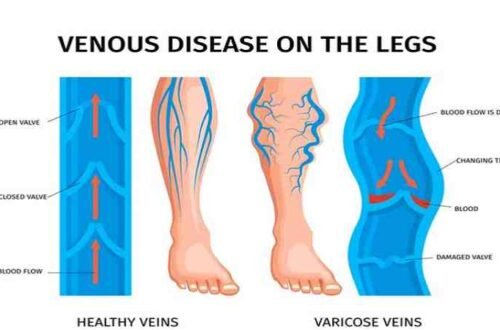Healthy, glowing skin is often seen as the ultimate beauty goal, but achieving it can feel like a complex task with so many products and routines to choose from. The truth is, maintaining beautiful skin doesn’t have to be complicated or overwhelming. By understanding your skin type, selecting the right products, and committing to a consistent routine, you can unlock a glowing complexion that’s uniquely yours. Skincare Routine
At Skintes, we believe that skincare is more than just a set of products—it’s about a personalized approach to nurturing your skin’s natural beauty. Whether you’re a skincare beginner or a seasoned beauty enthusiast, understanding the fundamentals of a good skincare regimen can make a huge difference in the health and appearance of your skin. In this guide, we’ll break down the key steps to take in order to achieve radiant skin, the ingredients you should look for, and the mistakes you should avoid along the way.
Step 1: Understanding Your Skin Type
Before diving into any skincare routine, it’s crucial to know your skin type There are five main skin types to consider:
- Oily Skin: Characterized by excess sebum production, oily skin tends to appear shiny, particularly in the T-zone (forehead, nose, chin). It’s also more prone to acne and clogged pores.
- Dry Skin: Dry skin can feel tight, rough, or flaky and often appears dull or lifeless.
- Combination Skin: A mix of both oily and dry skin, with some areas of the face being more prone to oiliness (usually the T-zone) and others feeling dry or sensitive.
- Sensitive Skin: This skin type is easily irritated and may react with redness, itching, or a burning sensation when exposed to certain skincare products or environmental factors.
- Normal Skin: Balanced, neither too oily nor too dry, and generally free from blemishes or irritation.
Once you’ve identified your skin type, you can tailor your skincare products to better suit your needs, ensuring the best results.
Step 2: The Core of a Simple Skincare Routine
While there are endless products on the market, a successful skincare routine can be built on just a few essential steps. Keeping things simple, yet effective, will allow your skin to thrive. The basic skincare routine includes the following steps:
- Cleansing
Cleansing is the first and most important step to remove dirt, makeup, and excess oils that can accumulate on your skin throughout the day.
-
- For oily skin, opt for a foaming or gel-based cleanser to control shine.
- If you have dry skin, a hydrating or cream-based cleanser will help lock in moisture.
- Sensitive skin types should select a mild, fragrance-free cleanser to prevent irritation.
- Toning
A toner helps balance the skin’s pH and prepares it for better absorption of subsequent treatments. If you have oily skin, choose a toner with exfoliating ingredients like witch hazel or salicylic acid. For dry or sensitive skin, look for a soothing, alcohol-free toner with hydrating ingredients like aloe or rose water. - Serum
Whether you want to brighten your complexion, combat acne, or fight signs of aging, a serum can deliver active ingredients deep into your skin. Popular ingredients to look for include:
-
- Vitamin C for brightening and antioxidant protection.
- Hyaluronic Acid for hydration.
- Niacinamide for calming inflammation and reducing redness.
- Moisturizing
Moisturizing helps to lock in hydration and keep your skin feeling soft and supple.For oily skin, opt for lightweight, non-comedogenic formulas, while those with dry skin should choose a richer cream to nourish and protect the skin’s barrier. - Sunscreen
Daily sun protection is crucial in any skincare routine. Sunscreen helps prevent premature aging, hyperpigmentation, and even skin cancer. Aim for an SPF of at least 30, and apply it every morning, even if you’re indoors or the weather is cloudy. For oily skin, select an oil-free or mattifying sunscreen, and for dry skin, a moisturizing sunscreen formula will work best.
Step 3: Active Ingredients to Look For
When selecting skincare products, certain ingredients stand out for their effectiveness in treating specific concerns. Understanding these active ingredients can help you make more informed choices. Here are some key ingredients to consider:
- Hyaluronic Acid: Known for its ability to hold up to 1,000 times its weight in water, hyaluronic acid is a must-have for skin hydration. It’s suitable for all skin types and helps plump and smooth the skin.
- Retinol (Vitamin A): Retinol is one of the most powerful anti-aging ingredients. It stimulates collagen production, promotes cell turnover, and helps with fine lines, wrinkles, and overall skin texture.
- Niacinamide (Vitamin B3): Niacinamide helps regulate oil production, soothe inflammation, and lighten hyperpigmentation. It’s especially beneficial for people with acne or sensitive skin.
- Salicylic Acid: This beta-hydroxy acid (BHA) is perfect for treating oily and acne-prone skin. It penetrates deep into the pores to clear out excess oil and dead skin cells, preventing breakouts and blackheads.
- Peptides: These amino acids help to rebuild and strengthen the skin’s collagen and elastin fibers, improving skin elasticity and reducing fine lines. They’re excellent for mature or dry skin.
- Vitamin C: A potent antioxidant that protects against environmental damage, Vitamin C also helps brighten the complexion and fade dark spots. It’s a great addition for anyone seeking even skin tone.
Step 4: Exfoliation and Masks
In addition to the basic routine, exfoliation and masks can enhance your skincare game. Exfoliating removes dead skin cells, helping to prevent clogged pores and promoting skin renewal. There are two types of exfoliants:
- Physical exfoliants (scrubs) contain small particles that manually scrub away dead skin. However, these can be abrasive, so use them gently.
- Chemical exfoliants like alpha-hydroxy acids (AHAs) or beta-hydroxy acids (BHAs) dissolve dead skin cells and promote smoother skin. These are typically gentler and can be more effective than physical scrubs.
Face masks can also provide a concentrated treatment to address specific issues such as hydration, acne, or dullness. Look for masks with ingredients like clay for oil control, honey for hydration, or antioxidants for brightening.
Step 5: Consistency Is Key
The final piece of the skincare puzzle is consistency. The products you use need time to work, and the best results come from sticking to your routine daily. Avoid jumping from product to product based on short-term results—skincare is a marathon, not a sprint. With patience and regular use, your skin will begin to show the benefits.
Final Thoughts
Building a skincare routine doesn’t have to be overwhelming. By understanding your skin type, selecting the right products, and staying consistent with your regimen, you can achieve radiant, healthy skin. Whether you’re tackling acne, signs of aging, or simply aiming for a more glowing complexion, the key is in understanding your skin’s unique needs and nourishing it with the right ingredients. At Skintes, we believe that everyone deserves to feel confident in their skin, and with the right tools and knowledge, it’s more achievable than ever.





